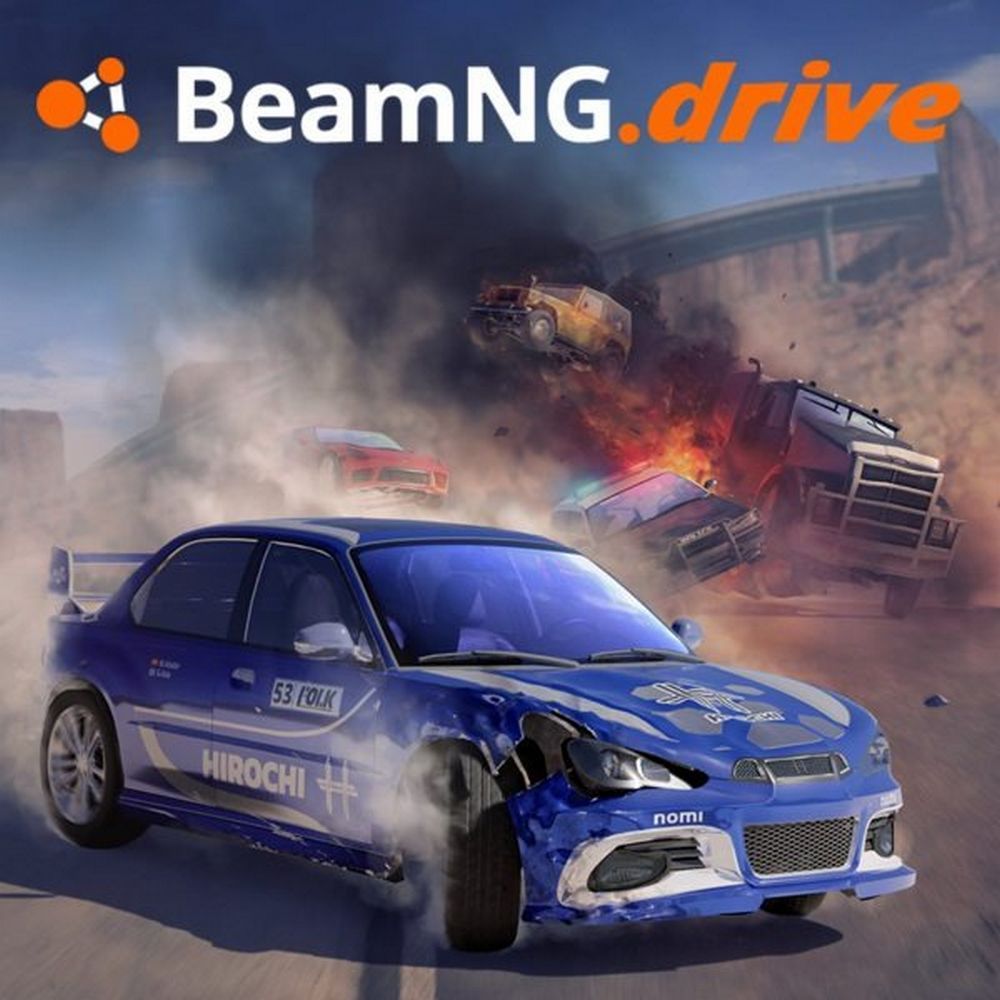
BeamNG.drive
All trademarks belong to their respective owners.Popular Now
 Free Fire Max
Free Fire Max
 Among Us
Among Us
 Call of Duty
Call of Duty
 FIFA 23
FIFA 23
 Counter-Strike 2
Counter-Strike 2
 Toca Boca World
Toca Boca World
 Garena Free Fire: Kalahari
Garena Free Fire: Kalahari
 Black Myth: Wukong
Black Myth: Wukong
 EA SPORT FC 25
EA SPORT FC 25
 R.E.P.O
R.E.P.O The Evolution of Impact: Tracing BeamNG.drive’s Journey in Realistic Simulation
In the landscape of video game development, few titles have demonstrated such a relentless commitment to pushing technological boundaries as BeamNG.drive. What began as a bold experiment in advanced physics simulation has evolved over more than a decade into the undisputed benchmark for realistic vehicle deformation and dynamic vehicle behavior. Tracing BeamNG.drive’s journey from its early tech demos to its current state reveals a fascinating narrative of continuous innovation, community collaboration, and an unwavering dedication to achieving unprecedented fidelity in real-time simulation.
Humble Beginnings: A Physics Dream Takes Shape (2000s – Early 2010s)
The genesis of BeamNG.drive predates its formal game release, rooted in a passion for realistic soft-body physics.
- Rigs of Rods (RoR) Legacy: The core concept and foundational technology of BeamNG.drive can be traced back to Rigs of Rods, a free, open-source vehicle simulator known for its soft-body physics. The BeamNG developers were heavily involved in the RoR community, refining the physics engine and laying the groundwork for what would become their proprietary technology. This period was crucial for proving the viability and potential of a real-time soft-body engine.
- Early Tech Demos and Concepts: Before its official announcement, BeamNG showcased impressive tech demos that highlighted the engine’s capabilities: vehicles deforming dynamically, realistic suspension responses, and objects interacting with unprecedented fidelity. These early showcases immediately captured the attention of simulation enthusiasts and paved the way for the dedicated game.
Early Access and Foundational Development (2013 – Mid-2010s)
BeamNG.drive entered Early Access in 2013, beginning its public development journey. This phase was critical for establishing its core features and building a community.
- Core Soft-Body Physics: The Early Access launch solidified the game’s identity around its unique soft-body physics engine, immediately setting it apart from all other vehicle games. Players experienced deformable vehicles and environments like never before, becoming the primary selling point.
- Initial Vehicle and Map Set: The game launched with a limited but high-quality set of vehicles and maps, designed to showcase the physics engine’s versatility. These included various car types (sedans, trucks) and environments ranging from test tracks to off-road areas.
- Building the Modding Foundation: From the outset, the developers embraced and encouraged modding. The early accessibility of the Jbeam structure and other modding tools allowed a passionate community to begin creating custom vehicles and maps, which quickly became a vital source of new content and a core pillar of the game’s appeal.
- Incremental Updates and Refinements: Throughout Early Access, BeamNG.drive received consistent updates, refining its physics, improving graphical fidelity, optimizing performance, and adding new core gameplay features based on community feedback.
Maturation and Expansion (Mid-2010s – Present)
Over the past decade, BeamNG.drive has continuously expanded its scope, content, and technological capabilities.
- New Vehicle Classes and official Content: The official vehicle roster has grown significantly, introducing new categories like buses, utility vehicles, custom race cars, and more. Each new addition further demonstrates the engine’s ability to accurately simulate diverse vehicle types.
- Expansive and Detailed Maps: The official map roster has matured dramatically, with additions like “West Coast USA,” “Italy,” and “Johnson Valley,” which are highly detailed, sprawling environments offering diverse driving experiences and new opportunities for physics-based challenges.
- Introduction of Scenarios and Campaigns: To add more structured gameplay, BeamNG.drive introduced scenarios and small campaigns, offering specific objectives like police chases, delivery missions, and stunt challenges, diversifying its sandbox appeal.
- Graphics and Rendering Enhancements: While physics remains king, graphical fidelity has steadily improved. Enhancements to rendering, lighting, shadows, and particle effects have made the game visually more stunning, making the realistic damage even more impactful.
- Optimization and Accessibility: Continuous optimization has made the game more accessible to a broader range of hardware configurations, improving performance and stability across the board.
- Dedicated Mod Repository: The implementation of an official in-game mod repository streamlined the process of discovering, downloading, and managing mods, further empowering the community and cementing UGC as a core part of the game.
- Future Vision: BeamNG.drive continues to be actively developed, with ongoing plans for further physics refinements, new content, and explorations into areas like multiplayer (though challenging for its physics model) and broader simulation applications.
BeamNG.drive’s journey is a testament to the power of focused development and a clear vision. From its humble origins in community-driven physics projects to its current status as a leading simulation title, it has consistently pushed the boundaries of what’s possible in real-time vehicle dynamics and damage. Its evolution is a powerful narrative of technological innovation, turning a niche concept into a beloved and enduring platform for vehicular exploration and realistic impact.
What do you think has been the most significant milestone in BeamNG.drive’s development journey so far?
Rating
PROS
- Free to play
- Open-world environment
- Realistic crashes
- Realistic suspension
- Variety of terrain types
- Open world
CONS
- No multiplayer
- The game requires a powerful computer to run
- The game is not fully optimized
- The game does not have any in-game tutorials
